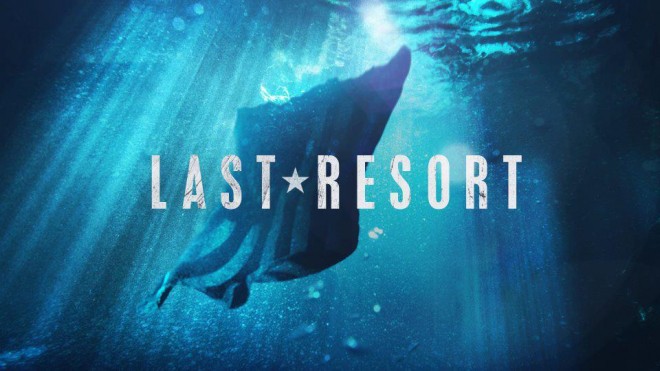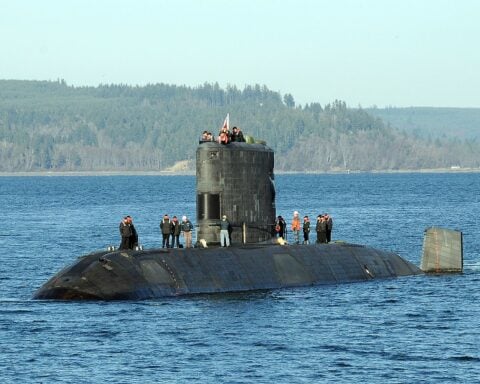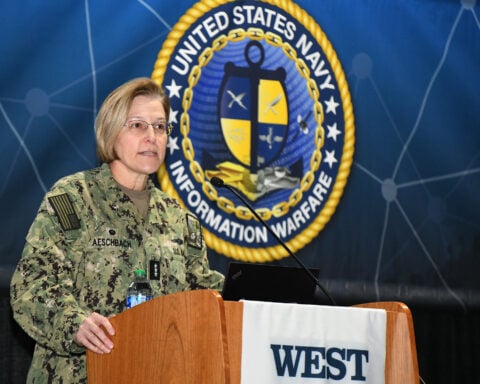The new ABC drama Last Resort puts the crew of the USS Colorado, a fictional Ohio-class ballistic missile submarine, at odds with a secret conspiracy inside the U.S. government with aims of sparking a global conflict. News.usni.org asked Naval Institute Editorial Board member and U.S. Navy submariner Lt. Jack Walsh to assess the reality of what was on screen to how things really work on board a boomer.
Spoiler Alert: There are many.
The show is Hollywood’s take on the end of the world with enough gaps in real naval procedure to make the entire plot impossible.
Here is what any qualified submariner would say the show did wrong:
Busy First Day
The crew of the fictional USS Colorado had an unbelievably busy first day on screen:
Colorado picked up a group of Navy SEALs in a hostile environment with a nuclear ballistic missile submarine; the boat received missile-launch orders out of the blue; spoke via phone with the deputy secretary of Defense; instantaneously watched TV news at sea (possible, but highly unlikely); disobeyed a launch order; had the captain relieved; dodged a cruise missile underwater; crossed the equator and then ended up off the coast of Pakistan; bottomed the submarine on the ocean floor; miraculously escaped the ocean floor; occupied a remote Pacific island harbor; hit a fishing vessel, took over the island; threatened the U.S.; went back out to sea; launched a nuclear missile at Washington D.C.; and were threatened by U.S. bombers.
Last Resort tried to combine Crimson Tide, The Hunt for Red October, U-571, Down Periscope into just not one show, but into one episode. Hollywood’s timelines for submarine movies are bad enough — this is just laughable.
The Unbelievable Launch Order
The crux of the first episode centers on an unbelievable and highly suspicious launch order. Strategic conflict requires an appropriate escalation of world events in order to cause a strategic missile submarine to take offensive action. Submariners are trained to make sound decisions based on known world events. Considering the fact the nuclear launch order was given in the first few minutes of the episode, I would argue that there was not an appropriate escalation in world events to warrant a nuclear launch. Therefore it’s appropriate for the Colorado’s commander to question the launch order.
Execution messages are sent out as Emergency Action Messages (EAM). These messages are delivered over dozens of circuits to submarines for redundancy. During a nuclear conflict it is expected that communication will be degraded as the U.S. is under attack. Submarines are capable of tracking which transmission sites are available and which are not. In this specific scenario Colorado only received a single EAM from a single source. If Colorado was able to receive satellite TV and speak with Washington D.C., clearly they should have been receiving multiple EAMs from various sources with the same message. The fictional Capt. Marcus Chaplin was correct to second-guess the launch order, as he had not received the normal transmission sequence of messages.
During the conflict SEALs question Chaplin’s reluctance to fire his missiles. SEALs are not trained for strategic war and wouldn’t have the first clue about message requirements for a real launch order.
Stuck Sub
Next the Colorado bottoms out while evading a mysterious adversary pursuing the rogue boat. This scenario is completely impossible. A bottomed Ohio-class submarine would incur significant damage to the fiberglass sonar domes, rudder, stern planes and other important appendages. Even if the boat got free it wouldn’t be fully functional without intensive maintenance. It would have been highly improbable for the Colorado to launch a missile later in the episode. All suction and discharge openings on an Ohio-class submarine are on the bottom. If an Ohio class submarine were bottomed you would likely lose the ability to perform vital propulsion plant functions. In order to counteract this scenario, the propulsion plant would most likely be shut down and the ship rigged for reduced electrical power preventing the ship from having full capabilities needed to get off the bottom. Diesel boats usually back out when they’ve bottomed on purpose. Like stepping in mud, there is a large suction effect when a submarine is bottomed. With how hard that ship appeared to hit the bottom and how heavy it is, its safe to assume the suction force would be insurmountable.
An Atomic Explosion off the East Coast
As the crew of the Colorado settles into a new island home they fire a ballistic missile that strikes off the Eastern coast of the United States as a warning to the international community. The detonation blast at Hiroshima equated to 12-15 kilotons of TNT. The blast yield from a Trident’s re-entry vehicle is significantly larger. The blast radius at Hiroshima was approximately 1 nautical mile. The blast radius for today’s re-entry vehicle would be significantly larger as well. Two hundred miles east of D.C. is only about 100 miles off the East Coast. A blast that close would have resulted in multiple casualties. More important, the explosion would create a huge radiation plume right outside the mouth of the Chesapeake Bay, the home of U.S. Fleet Forces Command. We won’t even discuss the fact that the range from any Pacific island in the Southern Hemisphere is not within range of the Colorado’s missiles.





